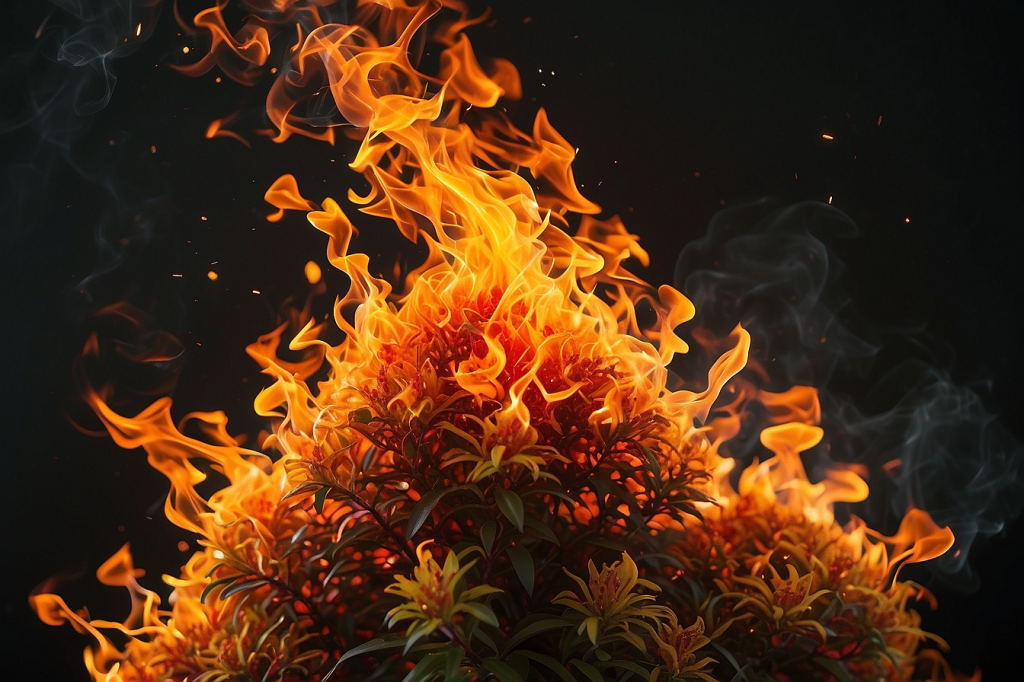Fleeting flames of old rituals to the heart that did mean the warmth of early dwellings, fire has never been mere heat and light. Among infinitely many cultures and mythologies, we find the fire symbol as a force of transformation, creation and even destruction.
So, why has the symbol of the fire survived over time and tradition? Let’s study its sacred manifestation in human culture and the spiritual faith.
Fire as a Primordial Element
We need to understand the elemental role of fire first before exploring myths and cultural stories. Almost all ancient world views, Greek, Indian, Chinese, etc, regard fire as one of the foundation building blocks of nature.
It is not just for the fire god Agni in Indian philosophy that the fire is not just a physical flame, but a divine go-between between the earthly and the spiritual realm. Just as in ancient Greek philosophy, fire is one of the four elements given by Empedocles—earth, air, and water.
The fire symbol becomes more than a natural influence. It is an energy link to the divine.
The Fire Symbol in Ritual and Ceremony
Fire symbols have sacred status in traditional religious rituals. Why? Because fire transforms. It makes offerings and lifts them up, in a physical and symbolic sense, to the deity.
- Vedic India: Fire rituals (Yajnas) formed the essence of spiritual living. The fire of their god Agni was considered a messenger to the gods.
- Zoroastrianism: Fire temples are still being run with the ever-burning flames, a symbolism of purity and the divine.
- Christianity: The candles represent the love of Christ and the lightning of the soul.
- Native American ceremonies: Sacred fires are used to cleanse, connect with ancestors and awaken the spiritual mind.
In each of these instances, the fire symbol connects the human to the divine.
Fire as a Creator and Destroyer in Mythology
The fact that the fire symbol has a dual nature—fire also destroys, as well as creates—renders it particularly powerful in mythology.
Creation Myths Involving Fire
- Greek Mythology: Prometheus steals fire from the gods for man; a gift whose father-in-law gives it, which sanctifies civilisation, but the price of this is high.
- Hindu Cosmology: Fire (Agni) is one of the early creations, who support life by warmth, digestion and transformation.
Destructive Symbolism:
- The Bible: The cities Sodom and Gomorrah are destroyed by fire in which they are damned to burn.
- Norse Ragnarok: Surtr is responsible for marshalling fire giants to burn the world before the Last Days.
With both creation and destruction, the fire symbol is a pivot: to go from one condition to another.
Fire as Inner Transformation: The Psychological Symbol
Apart from rituals and stories, fire is an unrealistic form of expression of something personal: inner transformation. The meanings of a fire symbol in a dream, meditation, in spiritual psychology tend to point at:
Purification of thought; Burning off of ego or illusions; Igniting passion or willpower; Catalysts for change, and many more.
Jungian psychology finds fire to be one of the archetypes that drives the soul towards growth. It is not pleasant, but it’s required.
Why Fire Symbols Still Burn Bright?
Wondering as to why we still find it so irresistible in modern times?
Birthday candles, Bonfires, Diwali or Olympic torches, the inspiration goes on and on in the fire symbol. It holds our gaze. It warms our gatherings. It speaks to something timeless: our thirst for enlightenment, transcendence and rebirth.
Even in this technology, we find echoes of this – firewalls, ignition, power-on signals. Fire is not only a physical requirement now, but a metaphor for spark, energy, and life itself.
Embracing the Fire Symbol in Your Life
This is how you may look at and work with the fire symbol in your personal journey:
Light a Candle with Intention
Use fire in your meditation/prayer to represent clarity, intent or release.
Write and Burn
List the things you want to let go of – then burn the paper safely as a ritual of release.
Visualise Inner Fire
In yogic and martial arts traditions, this manifestation of fire is where focus comes to the surface, where drive comes to the surface, and where spiritual power comes to the surface.
By working consciously with the fire symbol, we pay homage to its great old power and call upon a transformation in our lives.
Final Thoughts: Fire as a Living Force
The fire symbol is so much more than an old figure of speech; it is alive and part of our cultural DNA. It teaches us that heat brings change, that discomfort is growth, that ignition means light.
Whether you are just lighting a candle, tending to a fire or coveting change like a burning desire, let the flame be your teacher. At UEF, we believe that the fire symbol exists to guide you, throughout the darkness, towards the divine.

